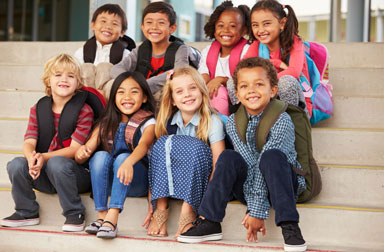 Students who don’t graduate face lifelong health risks and high medical costs, and are more likely to engage in risky health behaviors. They are less likely to be employed and insured, and earn less — all of which continues the vicious cycle of poverty and disparities.
Students who don’t graduate face lifelong health risks and high medical costs, and are more likely to engage in risky health behaviors. They are less likely to be employed and insured, and earn less — all of which continues the vicious cycle of poverty and disparities.
For all students, and particularly vulnerable ones, school-based health centers and school partners should consider social factors: did the students eat last night, do they have electricity at home to do their homework, do they even have a home? School-based health centers and school partners are in the best position to see the social factors and stressors that affect students, and to work with community partners to remove those barriers so students can learn and graduate.
DID YOU KNOW?
21% of children in the U.S. live in poverty.
For Black and Latinx children, the statistic is roughly triple that of white children: 37.8% and 31.9 %,, respectively, compared to 12.7 %.